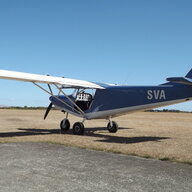One would like to think so Thruster. But then we don't know what we don't know, and sometimes that means we don't know what to ask.
For instance, a lot of contributors here seem to be locked onto the idea that the FDR is directly monitoring those switches. That may be so, but it is also entirely possible that it is monitoring something in the logic that is 'looking at' those switches. In which case one has to look not only at the switches, but at that logic.
And, again for instance, nobody has thought to consider the approx 1 sec between the two switches being logged as off. Maybe that was so. But the FDR is accessing and logging a great deal of data, a bit at a time, presumably by repetitively scanning all the stuff it is supposed to pick up. That approx 1 sec could be due to the scanning rate, the difference between the time it looked at switch 1 then switch 2.
For me a major red flag in all this is that it took place at rotation. That, to me, remains an enormous 'coincidence'.


